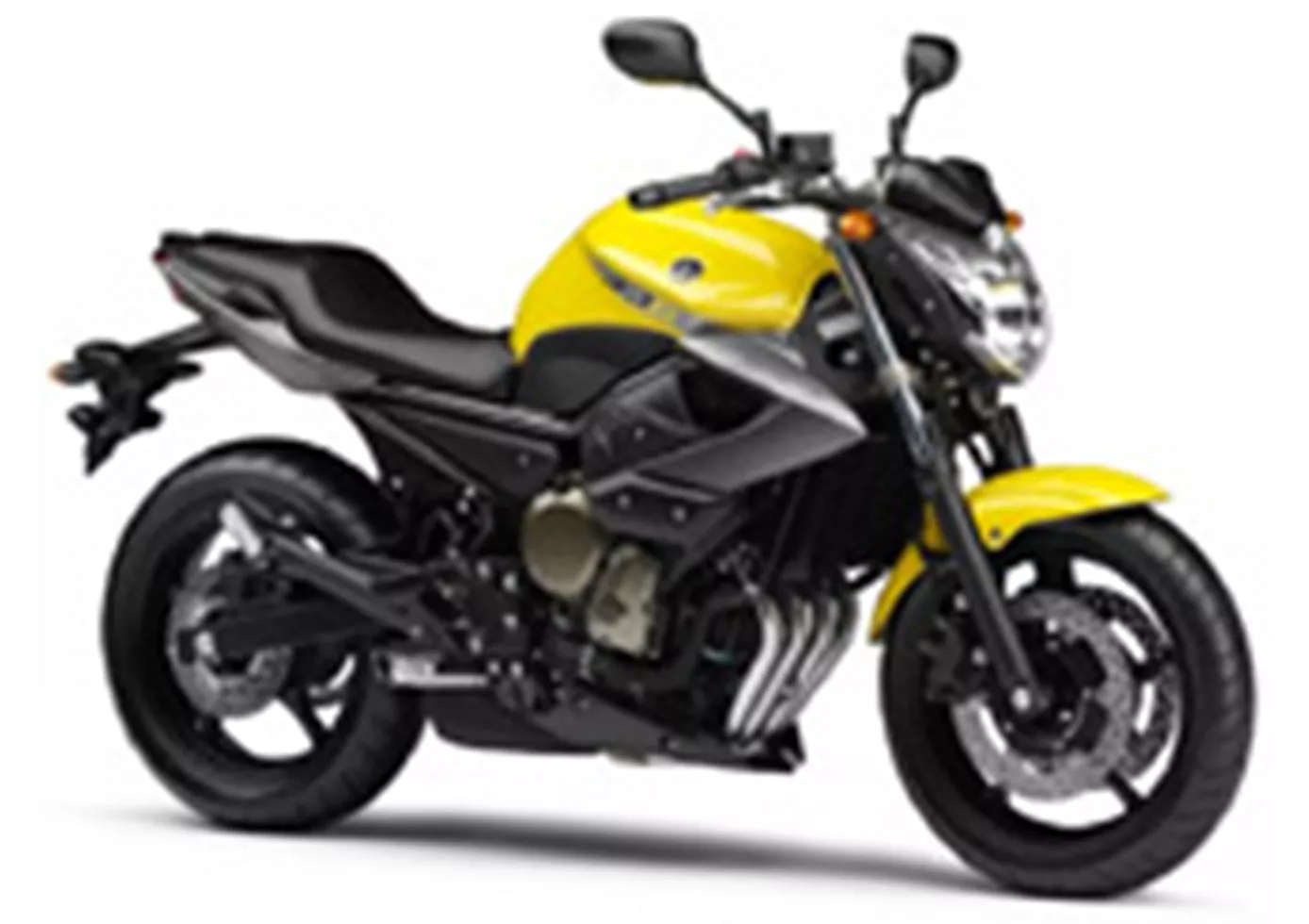Yamaha XJ6 2009 vs. Kawasaki ER-6n 2013

Yamaha XJ6 2009

Kawasaki ER-6n 2013
Overview - Yamaha XJ6 2009 vs Kawasaki ER-6n 2013
In terms of technical specifications, the Yamaha XJ6 2009 has a more powerful engine with 78 HP compared to the Kawasaki ER-6n 2013 which has 72 HP. However, the ER-6n has a higher torque of 64 Nm compared to the XJ6's 59.7 Nm. The XJ6 has 4 cylinders while the ER-6n has 2 cylinders. Both bikes have liquid cooling systems and similar displacement, with the XJ6 at 600ccm and the ER-6n at 649ccm.
In terms of chassis, both bikes have a steel frame. However, the XJ6 has a double cradle frame type while the ER-6n has a perimeter frame type. Both bikes have double disk brakes at the front and 17-inch diameter tires at the front and rear.
In terms of dimensions and weights, the XJ6 has a slightly longer wheelbase of 1440 mm compared to the ER-6n's 1410 mm. The seat height of the XJ6 is lower at 785 mm compared to the ER-6n's 805 mm. The XJ6 also has a larger fuel tank capacity of 17.3 liters compared to the ER-6n's 16 liters.

Yamaha XJ6 2009
Now let's discuss the strengths of each bike. The Yamaha XJ6 2009 is known for its rider-friendly performance characteristics, making it suitable for both beginners and experienced riders. It has an optimal clutch and offers playful, lighter handling, making it easy to maneuver. The seat comfort is also praised by riders. In terms of design, the XJ6 has an individual look with a young and aggressive appearance. The overall build quality is considered to be high and the bike is known for its reliability.
On the other hand, the Kawasaki ER-6n 2013 is praised for its solid handling. It offers a stable and confident ride, making it suitable for riders who prefer a more controlled and precise riding experience. The overall build quality of the ER-6n is also considered to be high, ensuring durability and longevity.

Kawasaki ER-6n 2013
However, both bikes have their weaknesses as well. The Yamaha XJ6 2009 is criticized for its design components not being too demanding, which may not appeal to riders looking for a more visually striking bike. Additionally, some riders find the torque development of the XJ6 to be lacking compared to other bikes in its class.
On the other hand, the Kawasaki ER-6n 2013 is noted to have weak brakes, which may be a concern for riders who prioritize strong braking performance.
In conclusion, the Yamaha XJ6 2009 and the Kawasaki ER-6n 2013 have their own strengths and weaknesses. The XJ6 offers rider-friendly performance, playful handling, and an individual look, while the ER-6n provides solid handling and a high-quality build. Ultimately, the choice between these two bikes will depend on the rider's preferences and priorities.
Technical Specifications Yamaha XJ6 2009 compared to Kawasaki ER-6n 2013
Pros and Cons in comparison
Pros and Cons in comparison
Yamaha XJ6 2009

Despite the common basis, the XJ appears much younger and more aggressive. A mid-cass motorbike that by no means makes you feel mid-range. Except for the swingarm, the motorbike appears quite high-quality and cool. The bike is a little easier to handle than the Diversion.
Kawasaki ER-6n 2013

The engine is hearty and a lot of fun, plus the ER shines with a Japanese meticulous finish and a fighting price.
Price Comparison Avarage Market Price Yamaha XJ6 vs Kawasaki ER-6n
There are a few key differences between a Yamaha XJ6 2009 and a Kawasaki ER-6n 2013. There are the same number of bikes of both models available on the 1000PS.de marketplace, specifically 6. It takes less time to sell a Yamaha XJ6 with 31 days compared to 42 days for a Kawasaki ER-6n. Since model year 2009 1000PS.de editors have written 4 reviews for the Yamaha XJ6 and 16 reviews for the Kawasaki ER-6n since model year 2006. The first review for the Yamaha XJ6 was published on 11/13/2008 and now has more than 21,900 views. This compares to more than 11,200 views for the first review on Kawasaki ER-6n published on 6/29/2005.




















